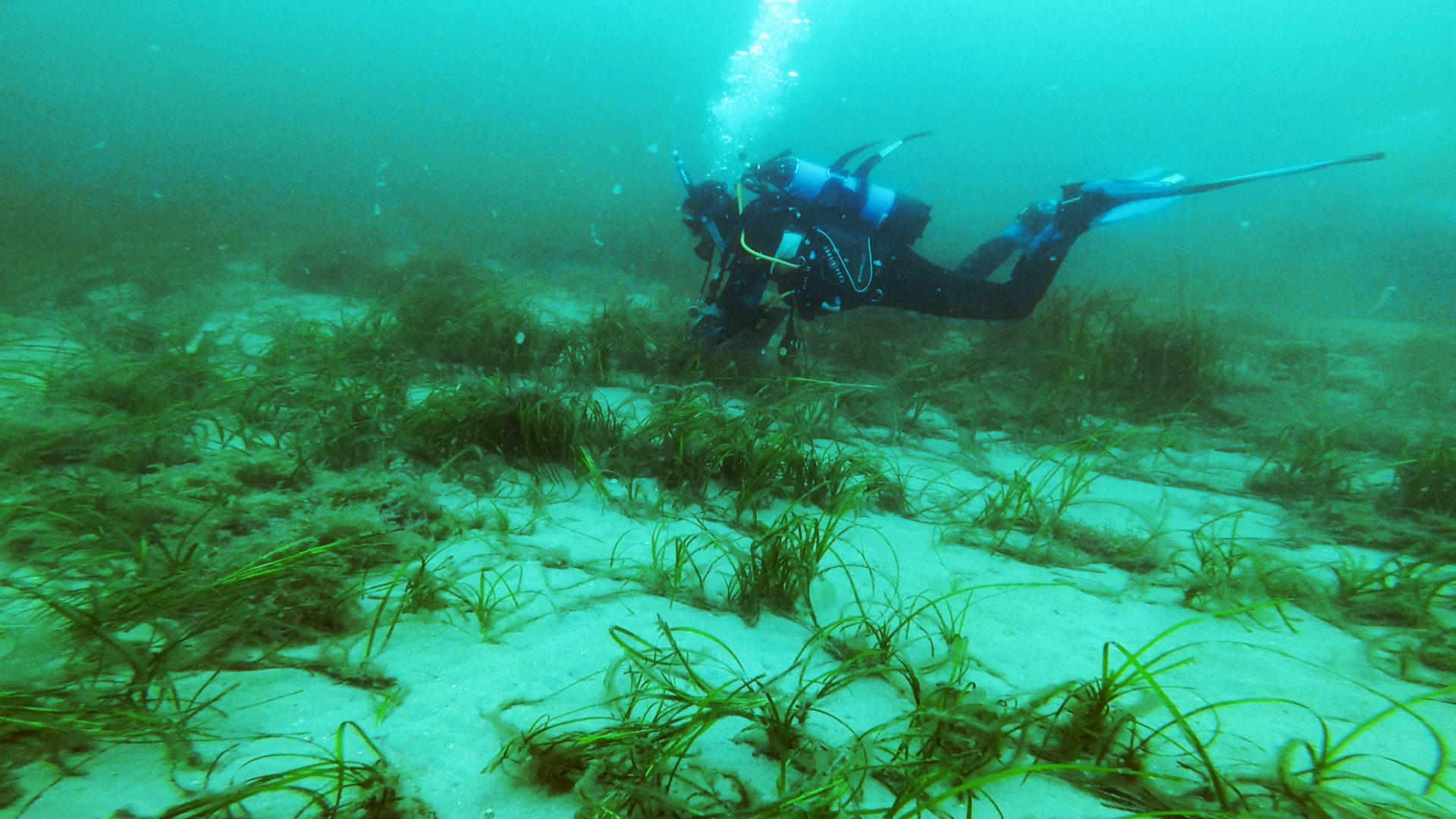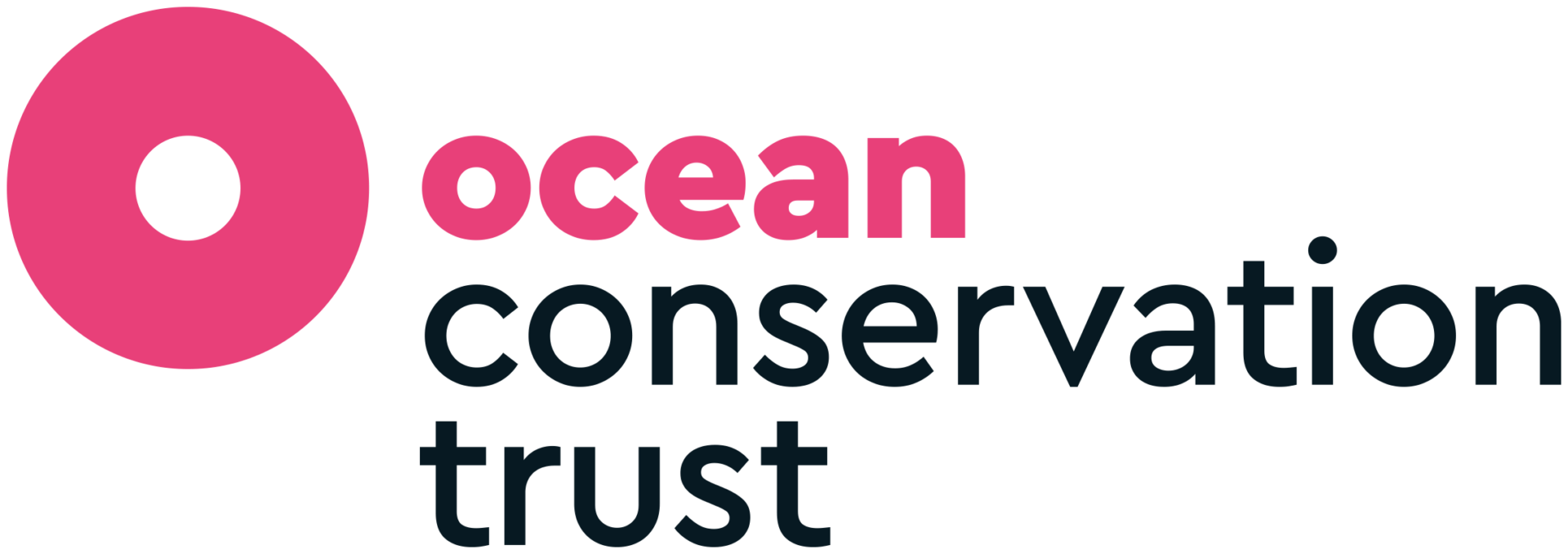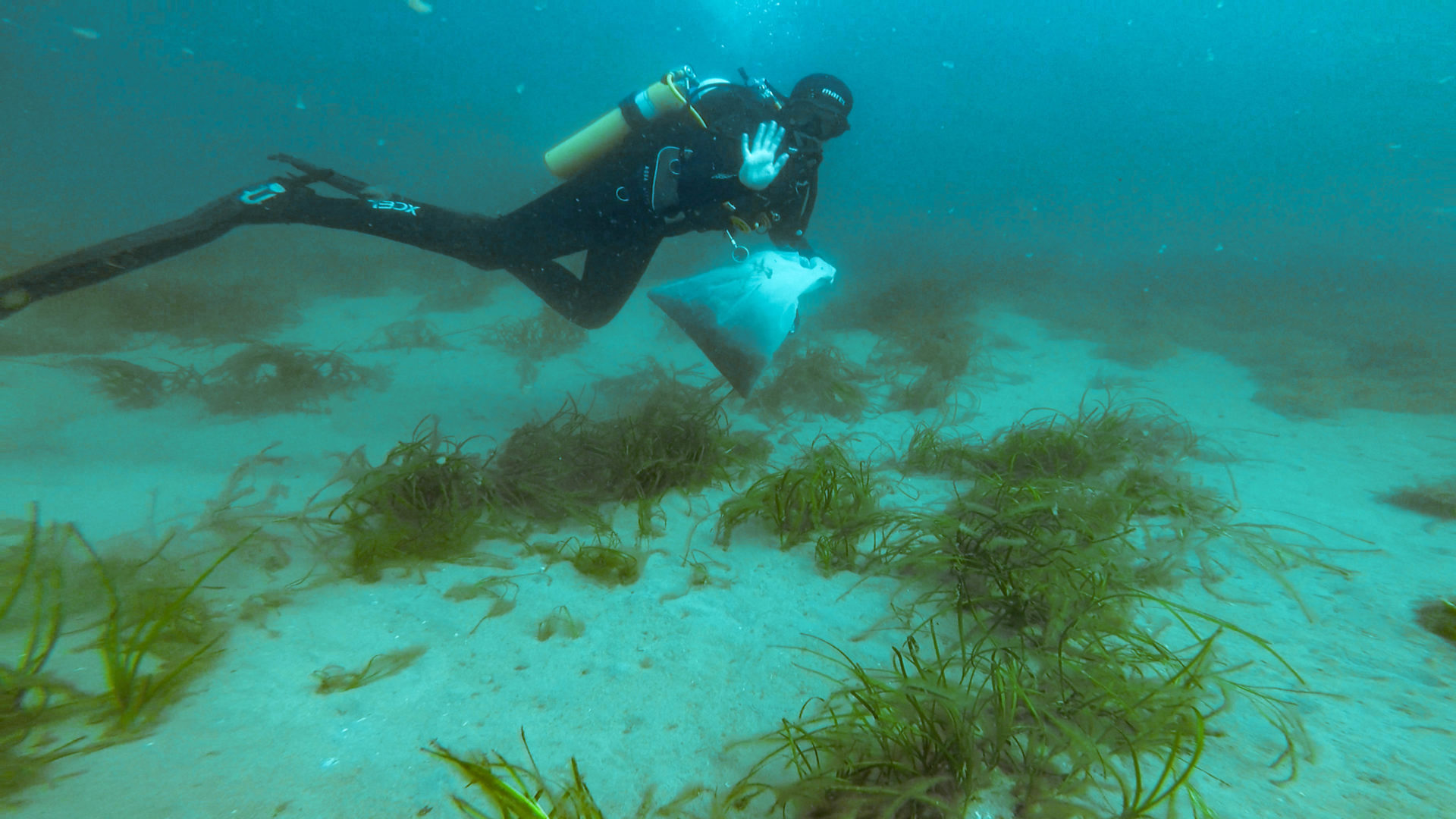For the past couple of weeks here at the Ocean Conservation Trust, we have been extremely busy on phase one of our restoration efforts to increase the extent and range of seagrass beds by up to 8 hectares as part of the LIFE Recreation ReMEDIES project.
This is a large-scale marine habitat restoration and management project led by Natural England to Reduce and Mitigate Erosion and Disturbance Impacts affEcting the Seabed (ReMEDIES).
You may have already seen that in June we opened our seagrass cultivation lab at the National Marine Aquarium, the first of its kind in the UK, and that we have already planted the facility with 60,000 seeds, which will be planted into the Ocean in the spring to help with the restoration efforts.
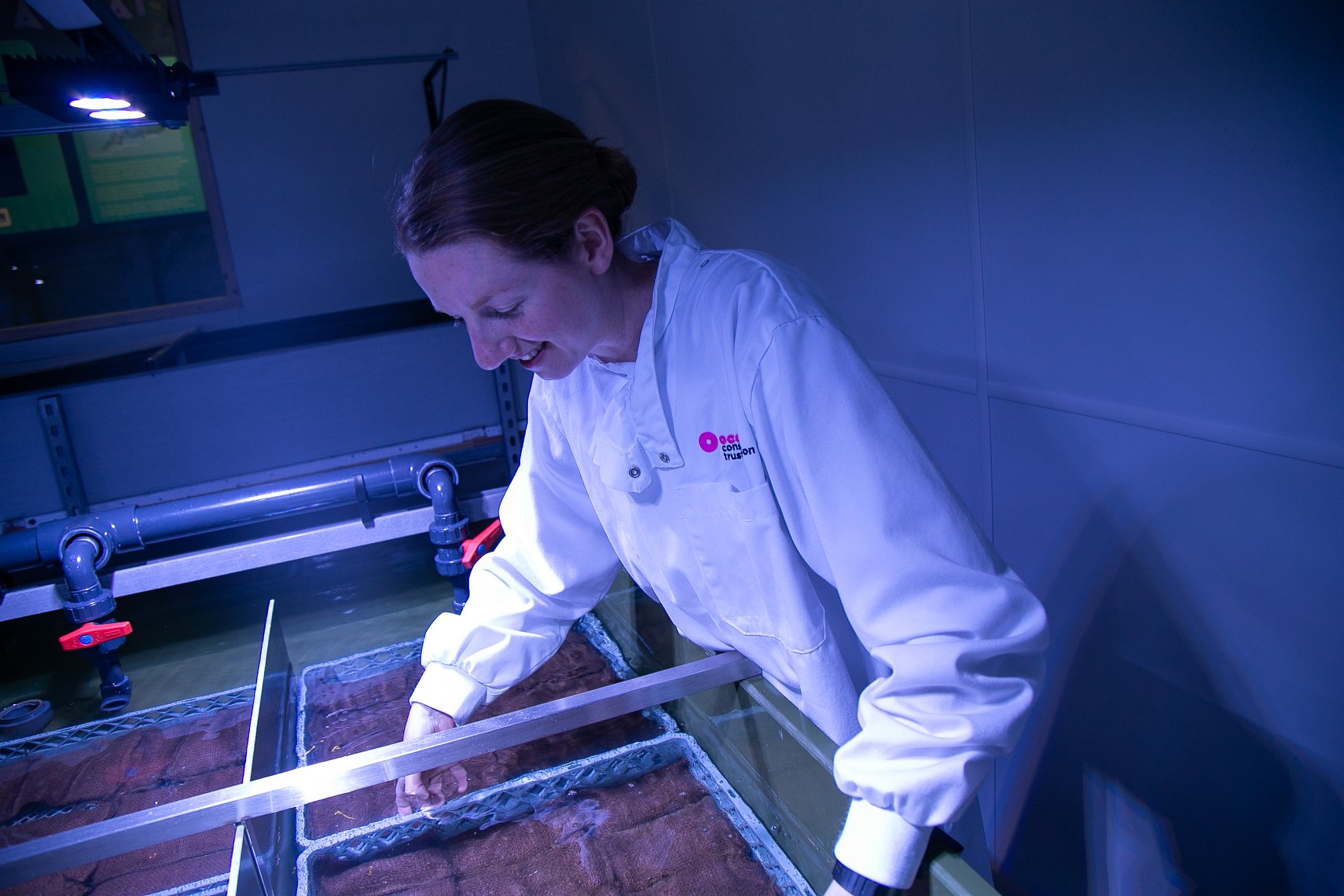
However, to restore 8 hectares of lost seagrass beds over three years, we need to collect up to 700,000 seeds a year. Half these seeds will be planted straight back into the marine environment, and half will be planted out in our Seagrass Lab to be planted as seedlings once they reach a suitable size. These restoration efforts will greatly increase germination success, where in the natural environment only a fraction of seeds germinate, and only a fraction of germinated seedlings survive.
So, how do you collect 700,000 seagrass seeds a year?
Firstly, suitable sites for collection need to be identified. These sites should consist of healthy seagrass beds, with a large extent of densely growing seagrass and with a high number of reproductive shoots. Seed collection involves collecting the seed-bearing reproductive shoots. Each reproductive shoot consists of approximately 40 seeds, so 17,500 shoots need to be collected to reach our target of 700,000 seeds. Seed collection is a little like mowing a grass meadow, but by hand, and underwater! Divers hand pick each shoot, leaving the base and rhizome (root) of the plant, ensuring that the bed remains intact. Collecting from a healthy bed safeguards the habitat even further.
Finding suitable areas for seed collection is no easy task, as many documented seagrass beds are known to be in unfavourable condition (something which we are trying to change), but by working with our project partners we identified a number of suitable beds all across the English coast.
It was on a drizzly early morning in the first week of August that the OCT dive team assembled with an air of excitement on their mission to save seagrass…
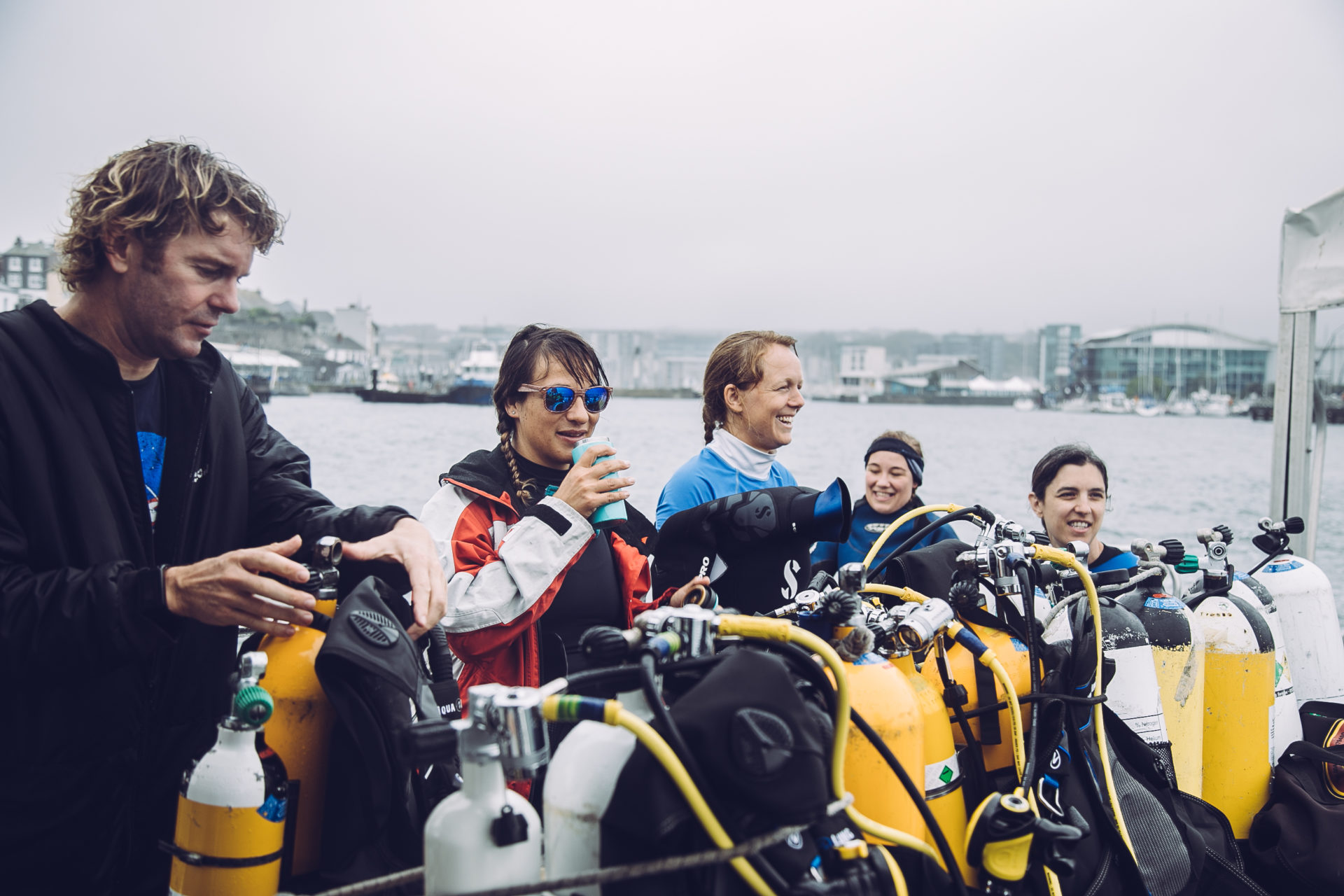
It seemed we weren’t the only ones to be excited, as we encountered a jumping blue fin tuna on our journey – the day was off to a good start. Now, seagrass seed collection might seem a rather glamorous occupation, but as we turned up to the dive site, we soon realised that some overnight rain and a moderate southerly swell had stirred the water up, and underwater visibility was going to be about 50cm.
However, the dive team, unperturbed, dived into the murky waters. Luckily, the reproductive seed bearing shoots of seagrass are brighter than those without seed, making them easy to spot.
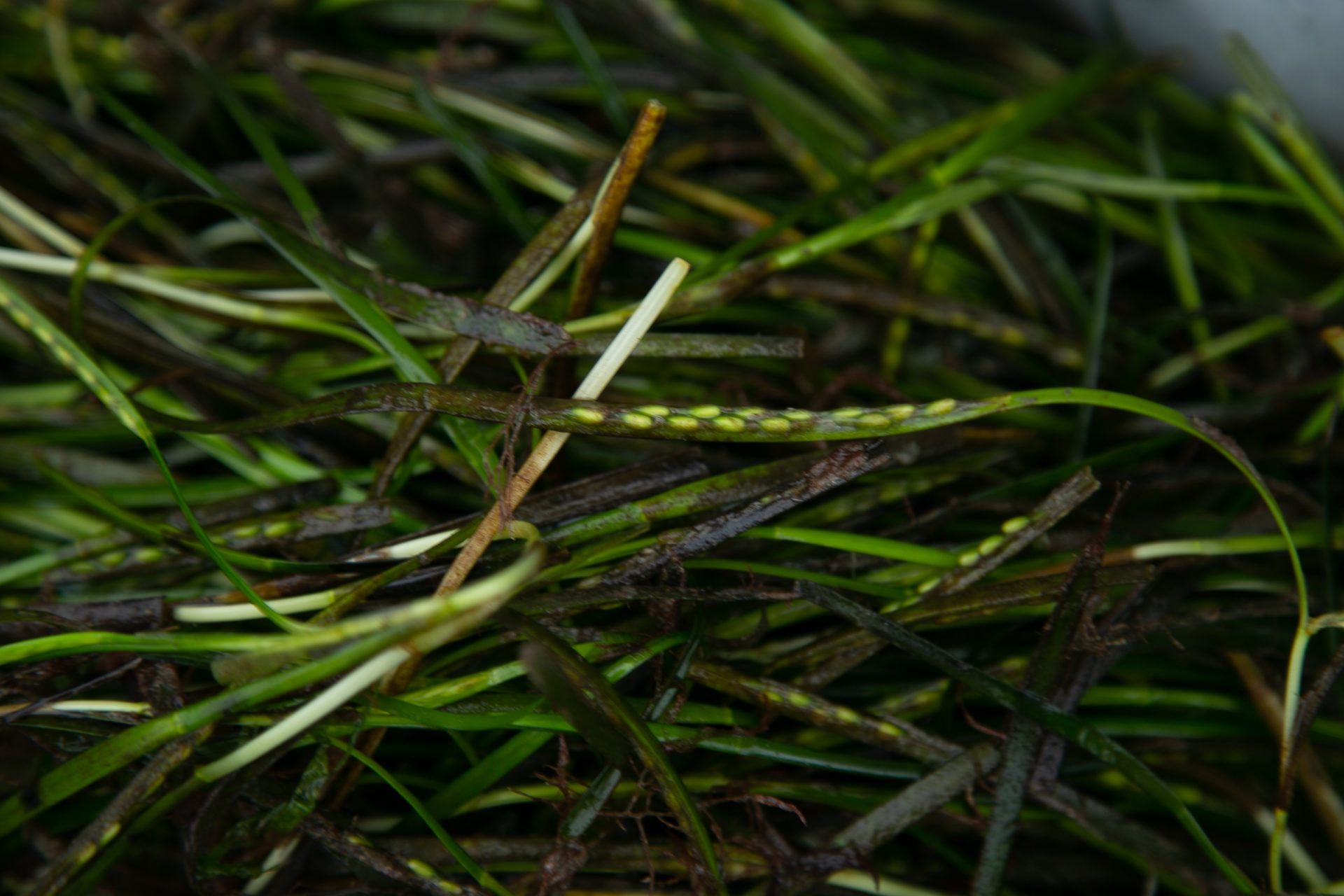
This meant that on the first day of collections we were well on the way to reaching our target, having collected over 100,000 seeds.
Day two of seed collection, saw us set out on what would be the hottest ever August day recorded in the UK, and diving conditions couldn’t be much better, with clear, calm blue waters as far as the eye could see (although some of us were regretting our decision to dive in a drysuit). The improved underwater visibility also meant we got to enjoy the company of some of the amazing underwater creatures that call this seagrass habitat home, including charismatic cuttlefish, the rare stalked jellyfish and even a few small spotted catsharks. After another successfully day of seed collection, even the dolphins came out to congratulate us on our return journey home.
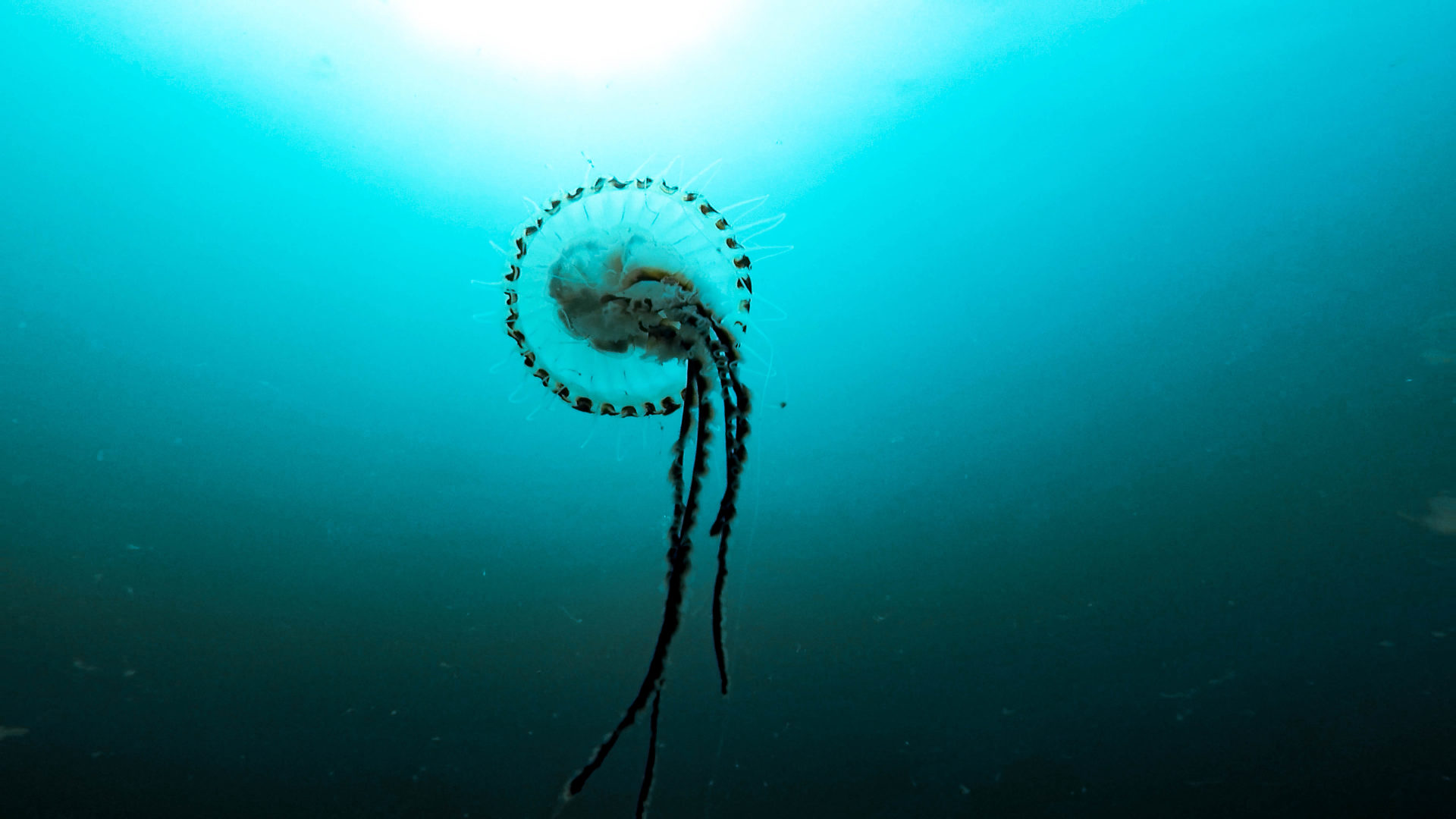
All the precious seeds were transported back to our Seagrass Lab at the NMA, and are currently being held in specialised tanks. Conditions are carefully controlled to mimic their natural environment – light levels, water movement and water quality are all at optimum levels to promote the seeds to naturally fall out of their shoots.
The OCT dive team have now conducted four days of seed collection dives in different locations along the south coast and have nearly fulfilled their mission of collecting 700,000 seeds. This work will go a long way towards helping to protect this incredible habitat which is found right on our doorstep.
